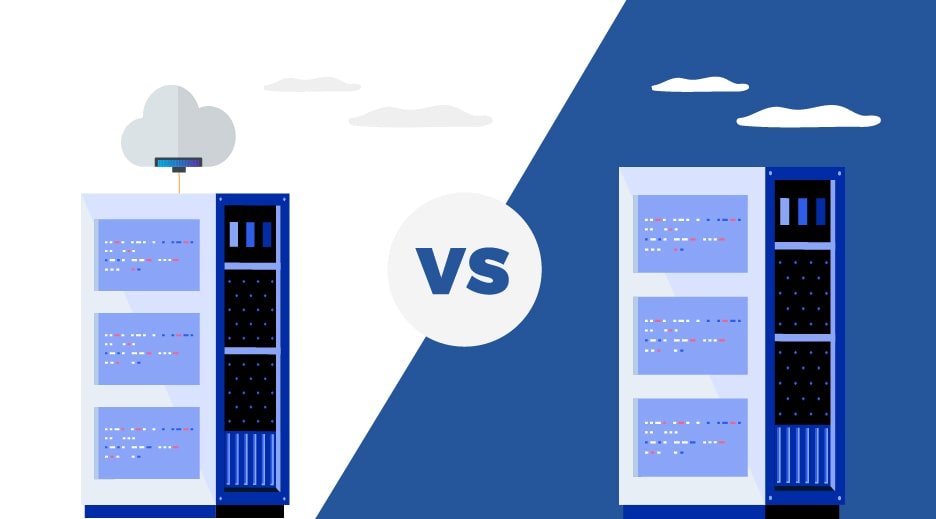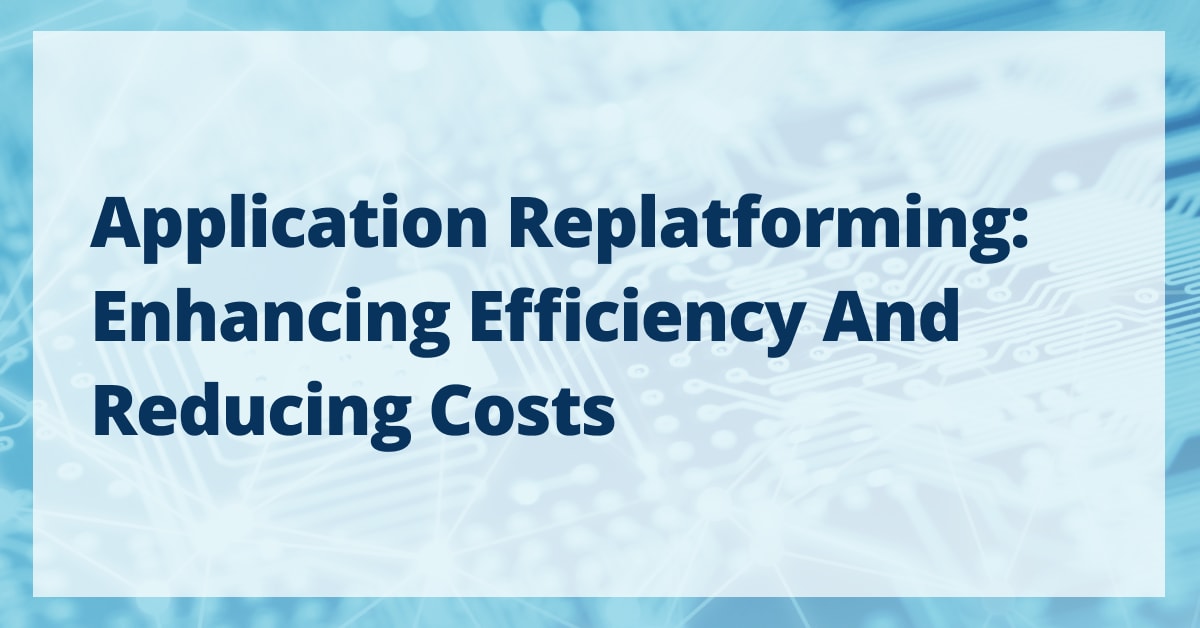
[ad_1]
Key points
- Application replatforming involves migrating applications from outdated or insufficient systems to cloud environments. This process focuses on enhancing performance and reducing maintenance costs without altering the application’s core functionality.
- Companies choose to replatform to leverage newer technologies, handle increased workloads more efficiently, and integrate modern technologies like AI, ML, and IoT more easily.
- The three primary cloud migration strategies are rehosting (“lift-and-shift”), refactoring (rewriting or restructuring for the cloud), and replatforming (adjusting without core changes). Replatforming is a balanced approach that improves performance and cost-efficiency without extensive modifications.
- Partnering with a reliable managed hosting provider like Liquid Web can mitigate challenges by offering expertise in cloud infrastructure, ongoing support, and best practices for migration.
As an online business aiming to maintain a competitive edge, ensuring that your application keeps pace with industry advancements and meets users’ growing demands presents a significant challenge.
Application replatforming, which involves moving your application to a cloud environment, is key to unlocking efficiency and cost savings for your business.
By the end of this guide, you’ll be able to determine if this path is right for your application. This article is your guide to successfully evolving your business through understanding replatforming’s fundamentals and mastering effective implementation strategies.
What is application replatforming?
Application replatforming entails moving your application that works on old, legacy systems to new, cloud-based platforms. This migration aims to enhance the performance of the software and reduce maintenance costs while keeping the fundamental functionality intact. This is a simpler approach to updating software because it doesn’t involve redoing everything from scratch.
There are a few big reasons why companies choose to replatform their applications:
- They might be using outdated technology that can’t keep up with what’s new or expected today.
- As companies grow or need to handle more work, they need their software to be able to handle more users or tasks smoothly.
- Replatforming to a cloud-based system allows for easier adjustments in the amount of resources the software uses based on what’s needed at any given time.
Cloud platforms often provide native support for modern technologies such as artificial intelligence (AI), machine learning (ML), and Internet of Things (IoT). Replatforming to the cloud can make it easier for organizations to integrate these technologies into their applications. This opens up new possibilities for innovation and improvement.”
Isaac Patino, Product Manager at Liquid Web.
Replatforming is all about making the most of new tech opportunities, like cloud computing, to stay ahead. Moving to the cloud can offer significant benefits, including the ability to adjust quickly to new demands, better performance, and lower costs.
Comparing cloud migration strategies: Replatforming, rehosting, and refactoring
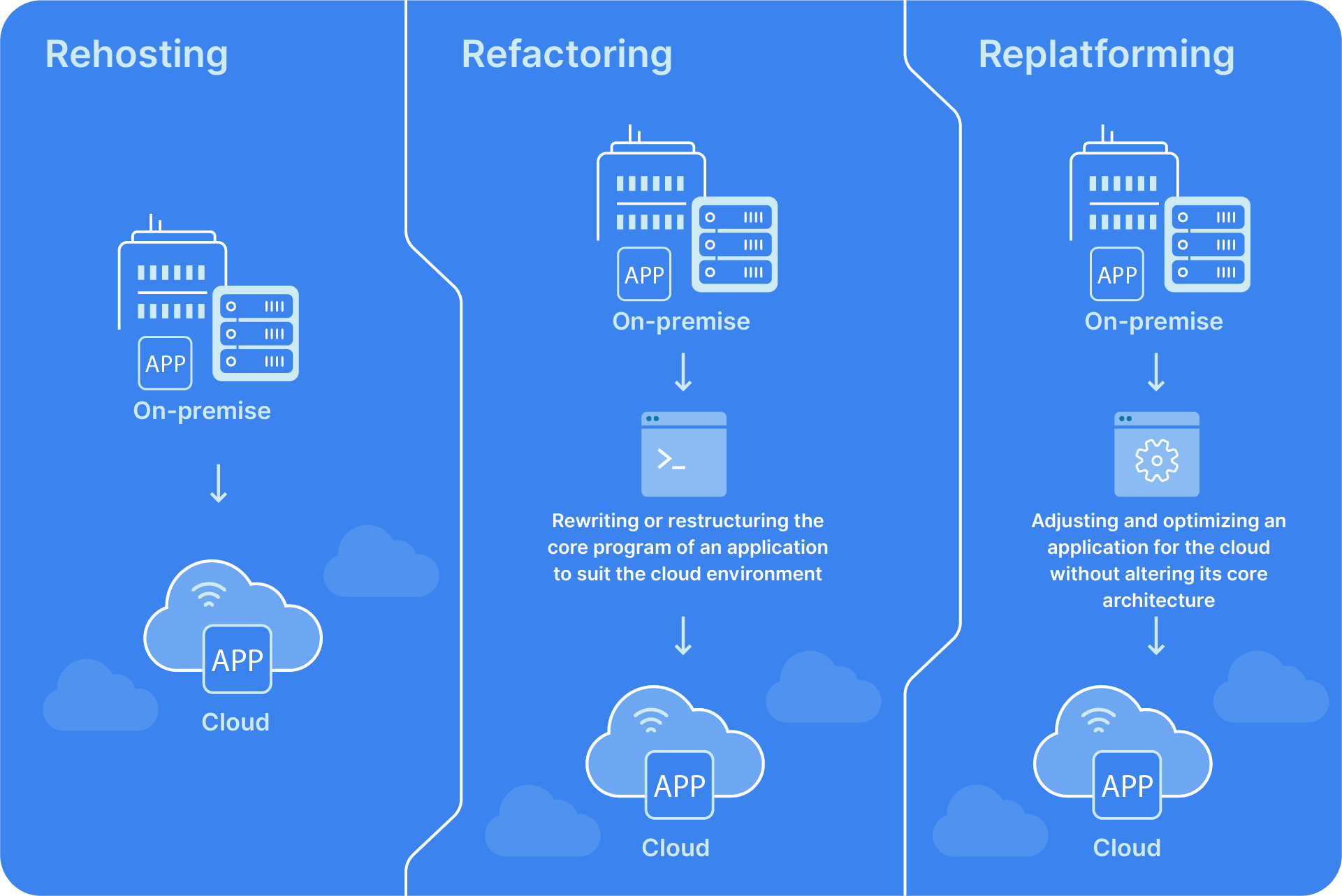
When migrating applications to the cloud, businesses are often presented with three primary pathways: replatforming, rehosting, andrefactoring. Understanding the nuances of each technique is crucial for selecting the most appropriate cloud migration method for your application:
- Rehosting is like moving furniture from one room to another – it’s the same furniture, just in a different space.
- Refactoring is more like taking that piece of furniture and changing it drastically to make it better.
- Replatforming is in the middle. It involves making changes to fit the furniture (software) into a new space better but keeping its core the same. This middle ground is appealing because it offers a way to get many of the benefits of moving to a cloud environment without the hassle of a complete overhaul.
But what are the differences exactly?
Replatforming vs. rehosting
Rehosting, commonly referred to as “lift-and-shift,” involves moving an application from its current on-premise environment directly to the cloud without making any modifications to the application itself. This method is generally the quickest, simplest way to migrate to the cloud, as it avoids application code changes.
| Rehosting | Replatforming | |
|---|---|---|
| Definition | Moving an application from on-premise to the cloud without modifications. | Adjusting and optimizing an application for the cloud without altering its core architecture. |
| Migration speed | Fastest and simplest. | Involves some modifications. |
| Application changes | None. | Minor, to improve compatibility and performance in the cloud. |
| Cloud optimization | May not fully utilize cloud features, potentially leading to suboptimal performance or higher costs. | Better utilization of cloud features than rehosting, without the extensive changes required by refactoring. |
When deciding between replatforming and rehosting, you should consider several factors:
- Current IT infrastructure setup: The complexity of the existing environment can affect migration.
- Application dependencies: How interconnected the application is with other systems can influence the choice.
- Available resources: Both in terms of budget and technical expertise.
- Desired benefits: Whether the goal is to simply move to the cloud or to optimize the application’s performance and cost.
Replatforming vs. refactoring
Refactoring involves a more profound transformation, where the core program of an application is rewritten or restructured to better suit a cloud environment.
This method enables full utilization of advanced cloud features like microservices and serverless computing, potentially enhancing scalability, performance, and cost efficiency.
| Replatforming | Refactoring | |
|---|---|---|
| Definition | Adjusting and optimizing an application for the cloud without altering its core architecture. | Rewriting or restructuring the core program of an application to suit the cloud environment, leveraging advanced cloud features. |
| Migration speed | Faster than refactoring but involves some modifications. | More time-consuming due to extensive changes and development process. |
| Application changes | Minor, to improve compatibility and performance in the cloud. | Significant, to fully utilize cloud capabilities like microservices and serverless computing. |
| Cloud optimization | Better utilization of cloud features than rehosting, without the extensive changes required by refactoring. | Enables full use of advanced cloud features, leading to greater scalability, performance, and cost efficiency. |
The choice between replatforming and refactoring depends on various factors, such as:
- Cost: Refactoring can be more expensive due to the extensive changes required.
- Time: Replatforming is typically faster than refactoring, which can involve a lengthy development process.
- Potential business disruption: The risk of operational disruptions during migration may be higher with refactoring.
- Long-term IT strategy: Organizations aiming for maximum agility and cloud-native benefits might prefer refactoring, while those seeking a balance between improvement and investment might choose replatforming.
In real-world scenarios, the decision often hinges on the specific needs and constraints of the business. For instance, a company with a complex legacy application that’s tightly integrated with its operations might opt for replatforming to minimize disruption and risk.
Conversely, a business focused on long-term digital transformation and innovation might invest in refactoring to fully embrace cloud-native advantages.
Often, organizations start with rehosting for quick wins, then gradually move towards replatforming and refactoring as they become more comfortable with the cloud environment and look to optimize costs and performance further.”
Luke Cavanagh, Strategic Support & Accelerant at Liquid Web.
Exploring the benefits of application replatforming
When the servers and systems supporting your applications become outdated or insufficient in capacity, multiple issues can arise, including sluggish performance, frequent downtimes, and compromised user experiences.
Replatforming addresses these critical challenges, ensuring that your applications can continue to meet and exceed the demands of modern digital operations.
Key benefits of application replatforming
- Increased flexibility and scalability: By moving to a cloud-based environment, businesses can easily adjust resources to match current demands, ensuring that the application scales seamlessly during peak loads and conserves resources during quieter periods.
- Improved security: Cloud platforms often offer advanced security features that can be more robust and easier to manage than those in traditional on-premise environments. Replatforming allows businesses to leverage these built-in security measures, enhancing the overall protection of their data and applications.
- Optimized resource utilization and cost benefits: Replatforming enables efficient resource usage, resulting in significant cost savings by paying only for used resources and reducing the need for physical hardware and maintenance.
- Enhanced performance and efficiency: Rearchitecting your application to modern and powerful cloud platforms can make it run faster and more reliably. This reduces maintenance overheads and enhances your business’s agility, allowing for quicker responses to market changes or customer needs.
Replatforming strikes a balance between the simplicity of rehosting and the thoroughness of refactoring. It offers a way to improve application performance without rewriting the application’s core architecture, often resulting in lower costs and greater return on investment.
This balance extends to the flexibility in choosing which parts of your application portfolio are best suited for replatforming, ensuring that each decision maximizes compatibility with the cloud environment and delivers tangible improvements.
Associated challenges and costs of replatforming
While application replatforming offers significant benefits, it’s important to approach this transformation with a clear understanding of the potential challenges and costs involved. A balanced perspective ensures that organizations are well-prepared to navigate the complexities of replatforming and can make informed decisions throughout the process.
The common challenges of replatforming include:
- Data migration risks: Moving data from the existing system to the cloud carries risks such as data loss, corruption, or security breaches. Ensuring data integrity and security during the migration requires meticulous planning and execution.
- Compatibility issues: Some components may need adjustments or replacements to function correctly in the cloud environment, necessitating additional development work.
- Potential vendor lock-in: Choosing a cloud provider can sometimes lead to vendor lock-in, making it difficult or costly to change providers in the future. Organizations must carefully consider their long-term strategy and select a provider that offers flexibility and compatibility with other services.
- Application downtime: Replatforming efforts might require taking applications offline temporarily, which can impact business operations. Minimizing downtime is a crucial aspect of the replatforming strategy to avoid disrupting users and business processes.
The process of replatforming involves various costs, including the upfront investment in cloud infrastructure, software licensing or subscriptions, and potential development or consulting fees to address compatibility issues or to redesign parts of the application.
However, these initial expenses should be weighed against the long-term benefits that replatforming can bring. By optimizing resource usage, reducing the need for physical hardware, and decreasing maintenance overheads, organizations can achieve a lower Total Cost of Ownership (TCO).
Not to mention, the improved scalability and performance of cloud-based applications can drive business growth and customer satisfaction.
Mitigating challenges with a managed hosting provider
Partnering with a reliable managed hosting provider like Liquid Web can play a huge role in overcoming the challenges associated with application replatforming. Managed hosting providers offer:
- Expertise in cloud infrastructure, security, and data migration, ensuring that the replatforming process is as smooth and efficient as possible.
- Ongoing support and maintenance services, allowing businesses to focus on their core operations while leveraging the full potential of their cloud-based applications.
- Best migration practices and thorough planning, which can help organizations minimize the risks and disruptions of replatforming. This includes conducting a detailed assessment of the current application architecture, planning for data migration, and selecting the right cloud services that align with the business needs.
Replatforming solutions with Liquid Web
Liquid Web is the go-to for organizations seeking robust support for their application replatforming efforts. With a comprehensive suite of services designed to cater to various replatforming needs, Liquid Web is a pivotal partner for businesses aiming to modernize their digital infrastructure.
Liquid Web’s array of services includes specialized solutions that significantly ease the replatforming process:
VMware hosting

VMware hosting places applications in an environment that supports more flexible code across different infrastructures. This flexibility is a key asset during migration, making it substantially smoother and more manageable.
Applications can be adapted and optimized for the cloud with minimal hassle, ensuring a seamless transition with VMware’s robust support.
Liquid Web’s Digital Commerce Cloud
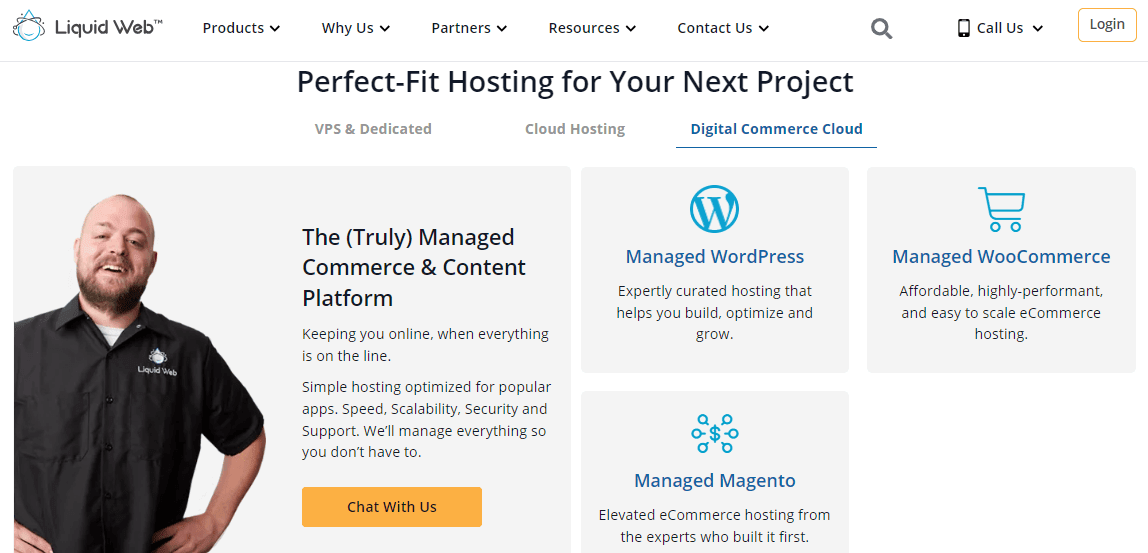
This is an excellent solution for eCommerce businesses grappling with challenges like sudden traffic spikes, slow website load times, and the security of sensitive customer data. This platform is engineered to provide secure, fast, and reliable hosting that guarantees business continuity.
The Digital Commerce Cloud ensures that eCommerce sites remain operational, responsive, and secure, even under the strain of increased online activity, thereby enhancing the customer experience and safeguarding vital data.
Liquid Web’s fully managed hosting services
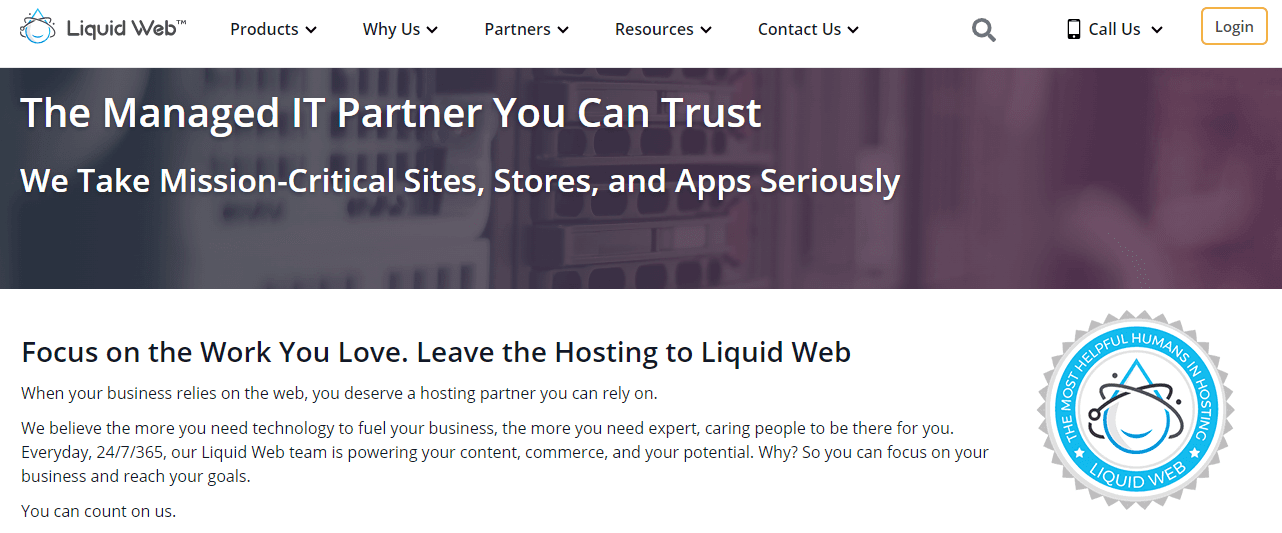
These managed cloud servers play a crucial role in ensuring smooth operations post-migration. For digital agencies that require comprehensive assistance with website monitoring, security, and troubleshooting, the advantages of Liquid Web’s fully managed hosting solutions are particularly relevant.
These services allow businesses to focus on growth while leaving operational efficiency and security concerns to Liquid Web’s expert team.
Choosing Liquid Web means companies can confidently replatform with a skilled partner, ensuring a smooth transition to the cloud. This collaboration empowers businesses to unlock their digital assets’ full potential, positioning them to thrive in today’s competitive landscape.
Easily replatform your application with Liquid Web
Replatforming offers a cost-effective, efficient way to transition your application to the cloud while preserving its relevance, scalability, and performance.
By leveraging cloud resources, businesses can more easily maintain and update applications while also preparing them for growth.
Successfully replatforming requires considering current infrastructure limitations, assessing challenges and costs, and selecting the appropriate cloud migration technique.
Liquid Web offers VMware hosting for simplified application migration and fully managed hosting services to ensure operational continuity post-migration. What’s more, with expertise in managing secure, fast, and reliable hosting environments, Liquid Web is equipped to address the unique challenges of cloud transition.
Take action today and explore Liquid Web’s robust solutions for all your cloud migration needs!
[ad_2]
Source link


